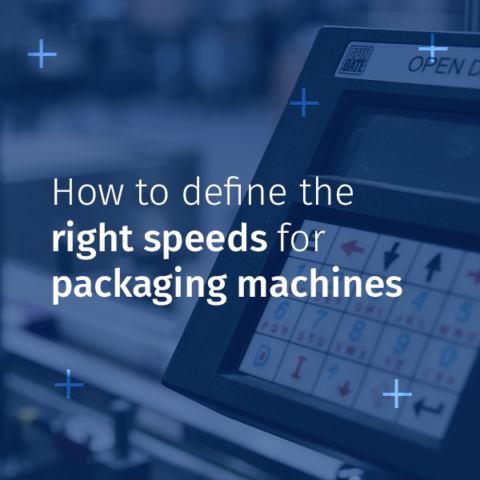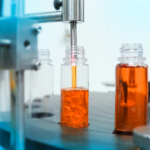Choosing a packaging machine depends on various criteria, with speed being one of the most important. Optimizing the speed of a production line not only maximizes output but also improves efficiency.
How to determine the ideal speed for a filling, capping, or labeling machine?
The speed of a packaging machine refers to the number of units processed per minute or hour. It varies based on several factors:
- Product type: liquid (edible oils, cosmetics, chemicals), viscous (honey, sauces, creams), solid (capsules, candies), powder (spices, dietary supplements)…
- Packaging format: glass or plastic bottles, jars, bags, tubes…
- Process steps: filling, capping, labeling, sealing, crimping…
- Precision requirements: some products need minimal tolerances that can affect production speed.
- Level of automation: semi-automatic machines have slower speeds than fully automatic models.
How to choose the optimal speed for your business?
Defining the optimal speed relies on a precise evaluation of production needs and constraints. Here are the key steps to follow:
- Analyze production volumes
Before choosing a packaging machine, it’s essential to determine daily, weekly, or monthly production goals. A company packaging 10,000 units per day won’t have the same needs as one producing 100,000.
- Identify production constraints
Every production site has unique characteristics:
- Staff availability
- Space allocated for machines
- Type of desired automation (semi-automatic or automatic)
- Compliance with industry standards
These elements influence the choice of machines and their operating speeds.
- Find the right balance between cost and speed
The faster a machine, the higher its cost. It is essential to find the right balance between the initial investment and the desired speed. A high-performance machine can be a great asset, but it will only be cost-effective if the production volume justifies the price. On the other hand, a more affordable machine with a slower speed may be sufficient for smaller productions.
It is important to do thorough research and compare the different available options before making an investment.
- Adjust speed for each machine
Different packaging machines have their own speeds, which need to be synchronized to ensure smooth production:
- Filling machine: Its speed depends on the product’s viscosity and the required precision. For example, our K-Net Auto filling machine is ideal for food and cosmetic liquids.
- Capping machine: It needs to be synchronized with the filling speed to avoid overflows. Solutions like the VS2000 ensure precise and fast capping.
- Labeling machine: It must follow the overall pace while ensuring accurate label application. Our Ninon model allows for fast labeling of cylindrical products.
- Semi-automatic and automatic machines: Automatic models offer higher speeds and are ideal for large-scale production.
The importance of flexibility in packaging machines
An efficient production line relies on perfect coordination between equipment. Therefore, it’s important to choose flexible and adaptable packaging machines.
CDA develops modular solutions that allow speed adjustments based on the evolving needs of businesses. Our machines are designed to ensure:
- Time and efficiency savings
- Reduced raw material waste
- Better management of human resources
Conclusion
Defining the speed of a packaging machine is not a decision to be taken lightly. Analyzing needs, adapting to production constraints, and selecting flexible machines are the keys to efficient production.







